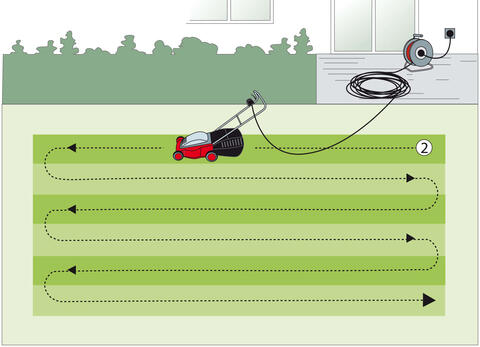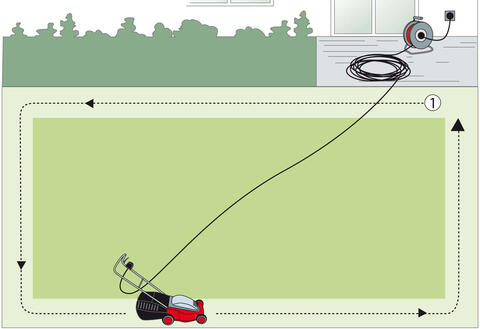Electric mowers are quiet, emit no exhaust fumes, and are relatively lightweight. However, if used incorrectly, the power cord can become a real nuisance. Here’s how to avoid the dreaded cable mess when mowing.
When I got my first electric lawn mower, I was thrilled—no gas, no fumes, way quieter. But I didn’t think much about the cord. That is, until it turned into a tangled nightmare and I nearly sliced through it mid-mow. I spent more time untangling the cable than actually cutting grass.
Eventually, I figured out a system. Now, before I even start, I unwind the whole cord, lay it out in big loops, and start mowing from the far edge of the lawn, working my way back. That way, I’m always pulling the cable behind me, not dragging it through the grass in front.
I even bought a bright yellow cable so I can always see it, and I added a little clip on the mower handle to keep it in place. It might sound like overkill, but now mowing the lawn is smooth, quick, and actually kind of satisfying. I never thought I’d say that about mowing, but here we are.
Contents
The Biggest Drawback: The Cord
The main disadvantage of electric lawn mowers is the long power cable. It can make handling the machine tricky and limit your range. If you’re not careful, the mower can easily damage—or even sever—the cord.
That said, electric mowers have their advantages:
- Precise cuts
- Low noise levels
- No exhaust fumes
They’re ideal for lawns up to 600 square meters, especially if the area is relatively flat and free of obstacles. A well-positioned power outlet is also essential.
Before You Mow: Proper Cable Preparation

- Fully unwind the extension cord from the reel before use. If it stays coiled, it can overheat and melt.
- Lay the cable in loose loops, stacked neatly on top of each other.
- Connect the cable securely to both the socket and the mower.
Step-by-Step Mowing to Avoid Tangling
- Start at Point 1: Mow around the edges of the lawn first. This defines a clear boundary.
- Then move to Point 2: Begin mowing in straight rows, gradually working away from the cable.
By moving in this pattern, you’ll keep the cord trailing safely behind you, reducing the risk of accidentally cutting it.
Pro Tip: Use a brightly colored extension cord—it’s easier to spot and less likely to get damaged, even during other garden tasks like hedge trimming.
More Tips to Prevent Cable Issues

- Use cable guides or clips attached to the mower’s handle to control the cord’s path.
- Make sure the cable always runs behind the mower or rests to the side on an already mown area.
- Use only certified outdoor-rated cables.
Extra Safety Tip: Invest in heavily insulated safety cables that can even withstand contact with the mower blades.
To protect plants when running the cable near garden beds, use smooth, round wooden or metal stakes, or pick up special cable guides from a garden supply store. These can even help guide the cable safely around sharp-edged corners.

